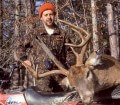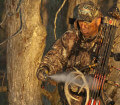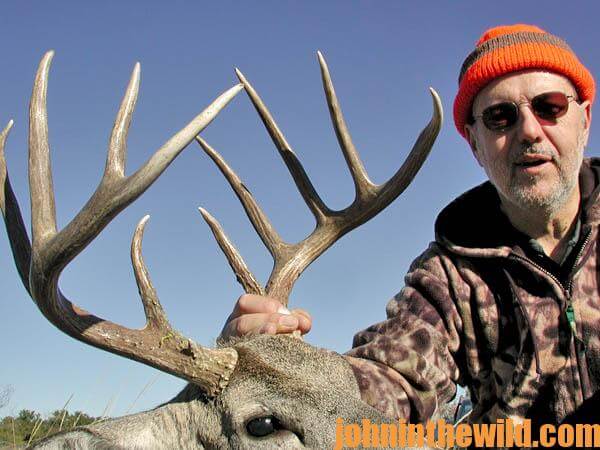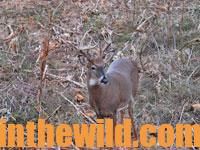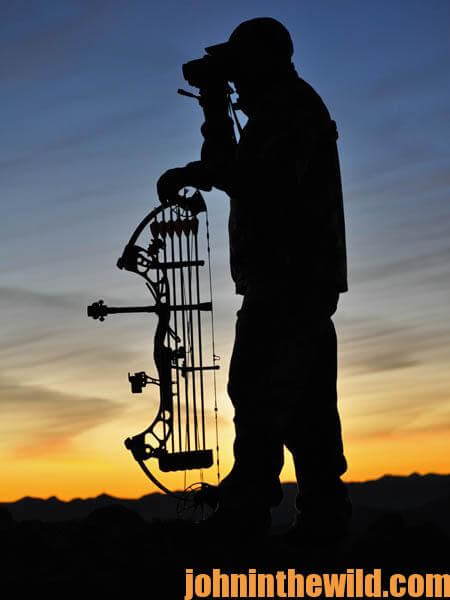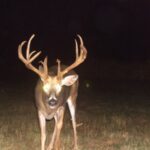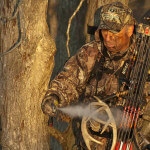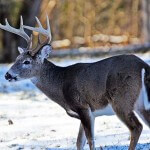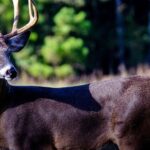John’s Note: Moon phase can affect your deer hunting, but probably not in the way you think. New research may change your opinion about when to hunt and when not to hunt according to moon phase. Many hunters believe that moon phase is the critical ingredient to determine when deer move. We’ve always believed that on the day before a full moon, the day of a full moon and the day after a full moon that deer don’t move as much. We’ve always thought that on bright nights deer feed, and on dark nights deer don’t feed. But 20 years of research by Dr Robert Sheppard with more than 35,000 hunters at Bent Creek Lodge www.bentcreeklodge.com in Jachin, Alabama, may change your opinion.
Bent Creek Lodge puts out 25 hunters for the morning hunt and 25 hunters for the afternoon hunt, every day during Alabama’s entire deer season.
For 20 years, when the hunters returned from the woods, they gave us the information they had gathered, the number of bucks and does seen, and the number of deer taken – both bucks and does. Once we gathered that information, we did an overlay with the information from the National Weather Service that recorded moon phase, wind direction, temperature and many-other weather-related factors. We matched-up the data these hunters brought in with the weather information we received from the National Weather Service. Then, we looked at each weather indicator one at a time to see how the moon phase, barometric pressure, wind direction, wind speed and sky conditions (rainy, cloudy, overcast and many-other variables) impacted deer movement. One of the variables that we studied was the likelihood of a hunter taking a deer during certain moon phases
The first 2 years that we did the study, we found information that was exactly what we thought we would. The day before the full moon, the day after the full moon and the next day were not productive days to hunt. Hunters weren’t seeing many deer or taking many deer on these days. There were exceptions of course, but not many. However, we ran into problems the next 2 years. The results were exactly the opposite. The day before the full moon, the day after the full moon and the next day seemed to be some of the best days you could bowhunt. So, we had 4-years worth of conflicting data as to when deer moved according to the moon phase. We went back and did a multivariable analysis. We found that the moon phase was a marker, but not the actual cause and effect that made the deer move. The actual cause for the deer to move was the temperature – not the moon phase. Temperature had a greater bearing on deer sightings than moon phase did. In other words, if a cold front hit, and there was a bright moon, then the deer would move. But a bright moon phase and warm weather meant bowhunters wouldn’t see many deer. We learned there were many factors causing deer to move, but temperature the overriding factor. The temperature – not the moon phase – was and is most responsible factor determining when deer moved.
To learn more about Dr. Sheppard’s research findings and hunting tactics and to order his book, “Whitetails,” go to his webpage www.bobsheppard.com.
You’ll learn deer hunting information and tips in the Kindle eBooks, “Bowhunting Deer: The Secrets of the PSE Pros,” “Jim Crumley’s Secrets of Bowhunting Deer,” “Deer and Fixings,””How to Hunt Deer Up Close: With Bows, Rifles, Muzzleloaders and Crossbows,” “ PhD Whitetails: How to Hunt and Take the Smartest Deer on Any Property” and “ How to Hunt Deer Like a Pro” by John E. Phillips. “Click here to get these books.”
About the Author
John Phillips, winner of the 2012 Homer Circle Fishing Award for outstanding fishing writer by the American Sportfishing Association (AMA) and the Professional Outdoor Media Association (POMA), the 2008 Crossbow Communicator of the year and the 2007 Legendary Communicator chosen for induction into the National Fresh Water Hall of Fame, is a freelance writer (over 6,000 magazine articles for about 100 magazines and several thousand newspaper columns published), magazine editor, photographer for print media as well as industry catalogues (over 25,000 photos published), lecturer, outdoor consultant, marketing consultant, book author and daily internet content provider with an overview of the outdoors. Click here for more information and a list of all the books available from John E. Phillips.

